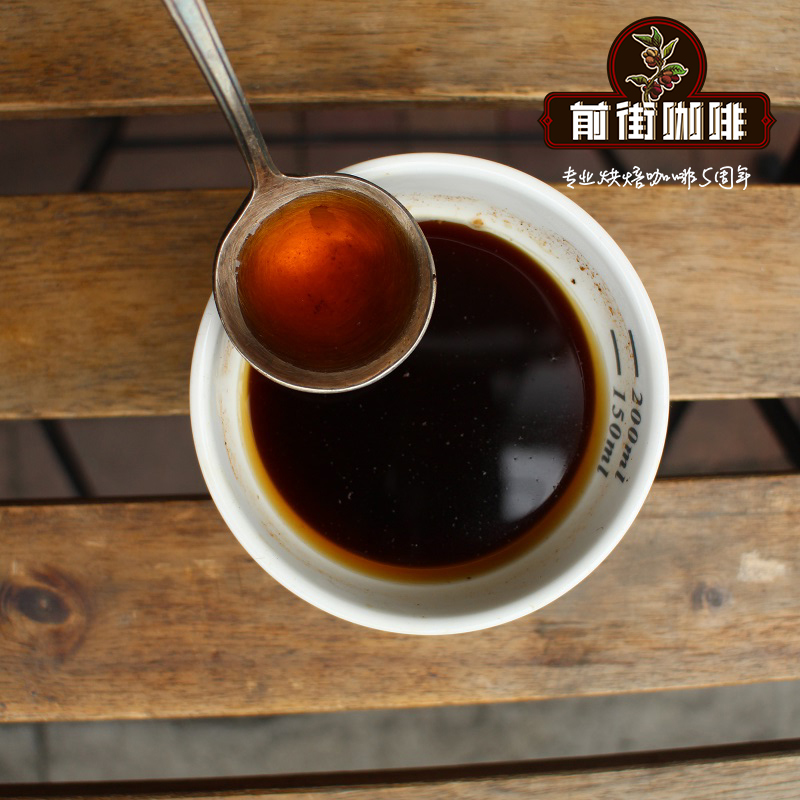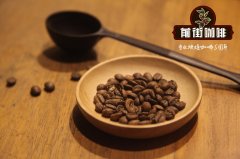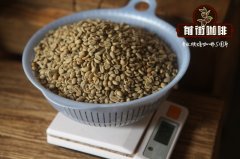Burundian Coffee Bean COE 6th Red bourbon Coffee Bean recommendation _ background introduction of Burundi CoE Competition

Professional coffee knowledge exchange more coffee bean information please follow the coffee workshop (Wechat official account cafe_style)
[country]: Burundi
[producing area]: Muhanga Northern Alpine in Kayanza area
[manor]: Gahahe Cahah
[variety]: red bourbon
[treatment]: washing
[altitude]: 1850 m
[flavor]: in light baking, the performance is as follows: floral aroma, peach, lemon, grapefruit, jasmine, honey, toffee, cola bubble sweetness, delicate and clean, smooth, creamy texture, lingering aftertaste, long-lasting sweetness
Burundi is a high-altitude coffee producing area, and because of thousands of mountains, volcanic soil and abundant rainfall, Burundi coffee has an excellent growth environment, which gives Burundian coffee a special and unique aroma and flavor. Unlike other producing areas, coffee is grown on small family farms in Burundi, and it is a traditional local treatment to centralize the harvested coffee fruits to the nearest coffee washing station.
Burundi is known as the Heart of Africa. Burundi is a small and primitive landlocked country, located at the intersection of Central Africa and East African countries. It is the watershed between Africa's great Nile River and the Congo River. Bujumbura, the capital, is located on the banks of the famous Tanganyika Lake. During your stay in Pulong, the lakeside breakfast every morning is an interesting experience to enjoy the magnificent Lake Tanganyika. But if the dike is not afraid of you and jumps directly to the table to look for food, the Great Lake is also the natural border between Pukuo, Congo and Tanzania. Puguo has a high topography and a dramatic change in elevation, from the lowest elevation of more than 700m (772m)-located in Lake Tangan Ika (Tanganyika) to the highest elevation of 2670 m, located in the Heha Mountains. (2012) I specially visited the coffee producing areas and processing farms in this area to explore the direct relationship between Osher coffee and coffee. And in last year and 2013, respectively, introduced, where the original mountain view is very green. Osher first launched Prondi Coffee in 2005, and it was not until 2012 that we were able to visit the Pu producing area in depth. The batch purchase this year is actually very small, but it is still of high quality and can represent the local characteristics of the producing area.
Although most people think that Burundian coffee should be similar to neighboring Rwanda, with most varieties of Bourbon, the actual cup test is not the same. Rwanda is brighter in terms of acidity, but the changes in Pulong, especially the meticulous changes in spices, are unique.
The citizens of Burundi have no habit of drinking coffee, so when they found that growing coffee can bring cash income and improve the quality of life, they accepted the guidance of experts and the government one after another. During the period of nationalization of the coffee industry, the Pulong government set up 138 small washing stations in coffee-producing areas, which is estimated to have already exceeded 200 CWS (Coffee Wash Station). CWS is set up like Rwanda, and there are no so-called "estates" in East Africa. Coffee farmers have very few coffee trees, ranging from dozens to more than 200, and they do not have the power to set up small peeled and pectin-free machine coffee (but it is common in Central America or Colombia). What they can do is, when the coffee cherries are ripe, they send them to CWS for treatment or sell them directly, so To discuss the quality of coffee in Rwanda or Pronte, we must use CWS's business model to track good quality batches from the point of view of daily batch (DAY LOT) registration. If we just look at the name of CWS to purchase, it will often be distorted or even disappointed.
On top of CWS, a larger scale will be set up, similar to Kenya's large-scale processing plant Factory or cooperative Coop. The organization, but in Pulong, is called: Sogestal! Sogestal is the management integration unit of CWS, which is handled by CWS small washing station after receiving cherries, and the following steps, dry processing, grading, sales and other matters are handed over to Sogestal to do. After the coffee was opened to the public, the previous seven sogestal became a joint venture between state-owned and private enterprises. The current policy is for the government to reduce its shareholding, usually less than 20% by the government and more than 80% by the private sector.
These seven SOGESTAL are mainly based on production areas and geographical areas, responsible for the management and post-processing of washing stations, and coordinate quality control and post-stage work and sales; they are: Kayanza, Kirimiro, Kirundo/Muyinga, Ngozi, Mumirwa, Sonicoff and Coprotra.
After the washing stage is completed and dried, the shell beans will be sent to the dry treatment plant, which is responsible for: preliminary grading, cup test, quality control report, and final grading and bagging. The main dry processing plants in the capital are SODECO, Sonocoff and Sivca.
Most of the coffee grown in Burundi belongs to bourbon species, and Jackson and other varieties have been introduced in recent years. Bourbon has obvious aroma, sweet enough in Pukuo bourbon and elegant and non-irritating acidity, so it should be quite competitive in the international market, but before the civil strife and many problems led to slow industrial development, and the popularity of Pulong is not enough, so the evaluation of the international market is not enough. In 2005, I said that Pulong is like a buried pearl. I hope that from 2012, Pulong can become a dazzling pearl in the boutique coffee market. The main and famous coffee producing areas in Puguo are Kayanza, Ngozi, Mumirwa, Buyenzi, Kirimiro and so on.
END
Important Notice :
前街咖啡 FrontStreet Coffee has moved to new addredd:
FrontStreet Coffee Address: 315,Donghua East Road,GuangZhou
Tel:020 38364473
- Prev

Burundian Mbirizi Coffee processing Plant Story _ what baking degree is suitable for Burundian coffee beans?
Professional coffee knowledge exchange more coffee bean information please follow Coffee Workshop (Wechat official account cafe_style) Burundian Coffee Farm: SALUM RAMADAHN,KAYANZA washing Station: MBIRIZI altitude: 1900 meters beans seed: BOURBON treatment: washing flavor: fruity, with rhubarb and lemon balsam. Fresh cherry flavor. A long and strong afterrhyme. S
- Next

Characteristic Story of Coffee beans of Carza Karzan in Burundian Coffee producing area
Professional coffee knowledge exchange more coffee bean information please follow the coffee workshop (Wechat official account cafe_style) Burundi Burundi is a small country in the interior of East Africa, the average height is 1600m ups and downs, planting coffee beans are small-scale farming type, due to the limitations of the water source area, the origin of coffee beans will be picked and concentrated in the local washing station CWS (Coffee Wash S)
Related
- Detailed explanation of Jadeite planting Land in Panamanian Jadeite Manor introduction to the grading system of Jadeite competitive bidding, Red bid, Green bid and Rose Summer
- Story of Coffee planting in Brenka region of Costa Rica Stonehenge Manor anaerobic heavy honey treatment of flavor mouth
- What's on the barrel of Blue Mountain Coffee beans?
- Can American coffee also pull flowers? How to use hot American style to pull out a good-looking pattern?
- Can you make a cold extract with coffee beans? What is the right proportion for cold-extracted coffee formula?
- Indonesian PWN Gold Mandrine Coffee Origin Features Flavor How to Chong? Mandolin coffee is American.
- A brief introduction to the flavor characteristics of Brazilian yellow bourbon coffee beans
- What is the effect of different water quality on the flavor of cold-extracted coffee? What kind of water is best for brewing coffee?
- Why do you think of Rose Summer whenever you mention Panamanian coffee?
- Introduction to the characteristics of authentic blue mountain coffee bean producing areas? What is the CIB Coffee Authority in Jamaica?

